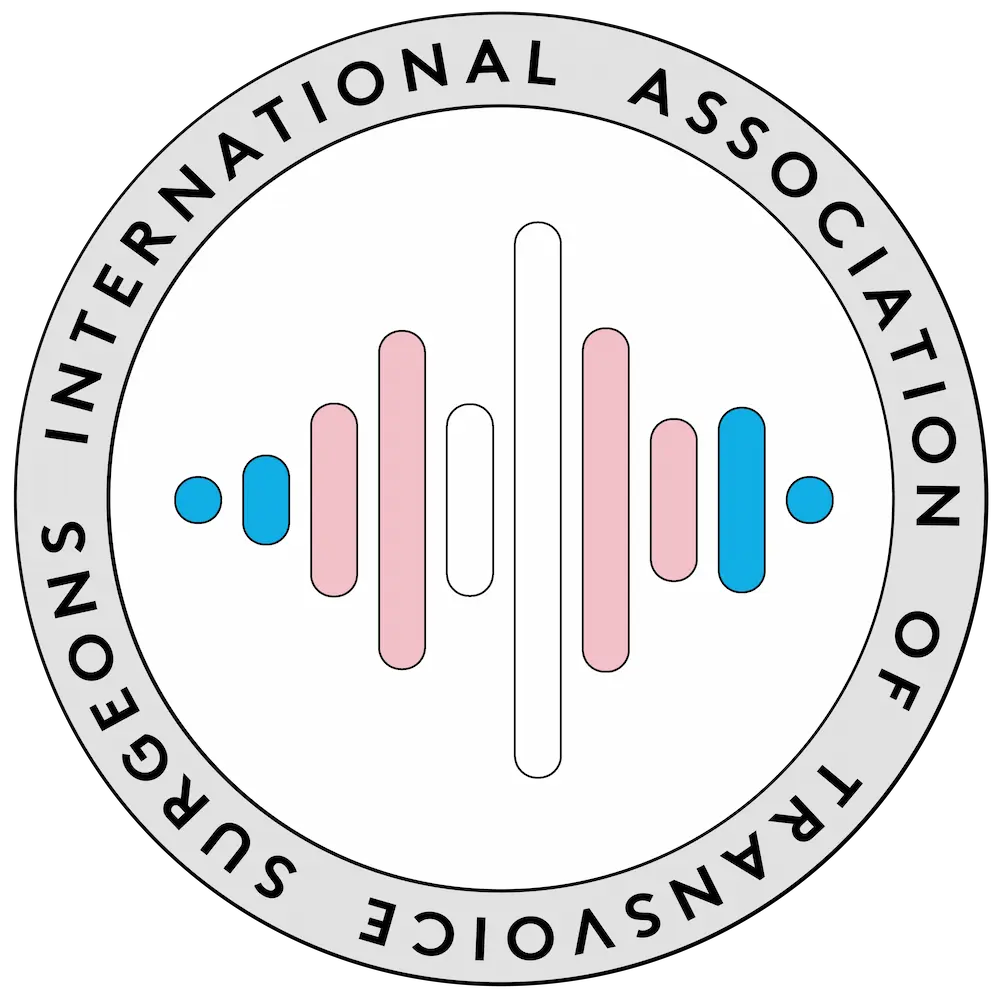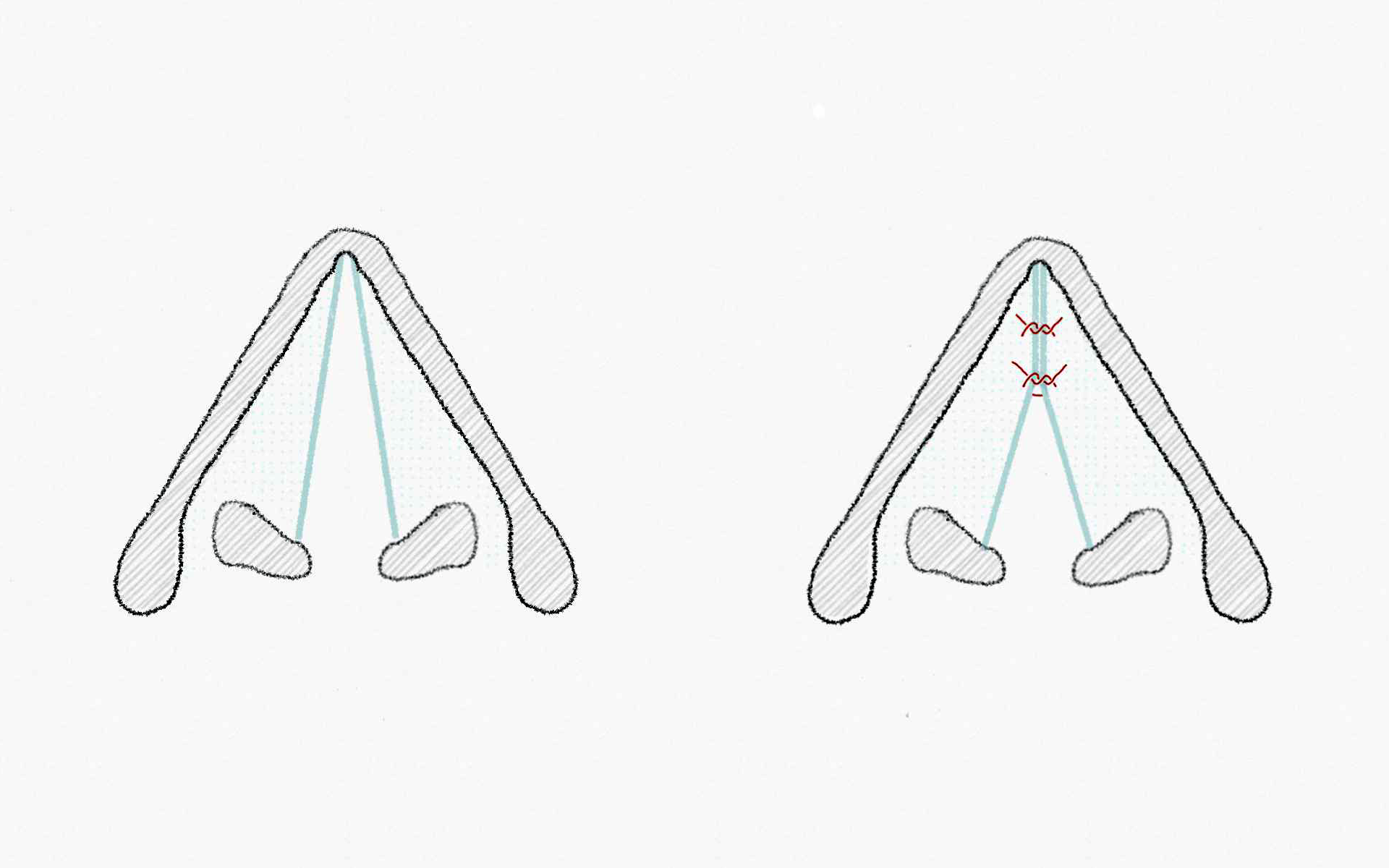Voice
Feminisation
Surgery
"Our mission is to alleviate people’s concerns around how they sound, so that they can focus their energy on what they say."
Voice feminisation surgery

Voices typically associated with femininity have a higher pitch than those typically associated with masculinity. However, pitch is only one aspect of that distinction. Intonation, resonance, vocal quality and articulation all play a role in our social perception of a voice as "feminine", as do language, loudness and non-verbal communication.
During puberty, a person assigned male at birth develops a larger larynx (voice box) with longer vocal cords (14mm vs 10 mm). In addition, under the effect of testosterone, muscle bulk within the vocal cords increases. The longer, bulkier vocal cords vibrate at a lower fundamental frequency (pitch). The average speaking pitch of adults assigned males at birth is approximately 107 to 120 Hz, while for those assigned female at birth it is 189 to 224 Hz. Voices pitched over 165Hz are generally perceived as feminine.
The fundamental frequency of the vocal cords (as with strings in a musical instrument) is related to their length, bulk and tension. Surgical pitch increase can be achieved by changing these parameters. The bulk of the vocal cords can’t be reduced once a person has gone through puberty, so surgery will aim to either shorten the cords (glottoplasty) or increase tension (cricothyroid approximation).
Before and after voice feminisation surgery
Laryngeal shave (Adam’s Apple reduction)
At the London Voice and Swallowing Clinic we also offer laryngeal shave, or Adam’s Apple reduction. This procedure aims to give a ‘feminine’ contour to the neck by reducing the Adam’s Apple. This can be performed as a standalone procedure or combined with Glottoplasty or Cricothryoid approximation.
Surgical Procedures
The most effective and most predictable procedure for voice feminisation is the endoscopic modified Wendler Glottoplasty. This involves shortening the vibrating segment of the vocal cord by around 40 percent, using a CO2 laser, and stitching the front of the vocal cords together, in order to raise the pitch. If there is not sufficient pitch increase, there is also the option of Vocal Fold Muscle Reduction (VFMR).
Glottoplasty
The aim of this procedure is to adjust the proportions of the vocal cords. Vocal cords in those assigned female at birth are shorter than in those assigned male at birth. Glottoplasty reduces the length of the vibrating segment of the cords leading to higher pitch.
The procedure is performed endoscopically via the mouth with no external wounds or scars. Using a CO2 laser, the lining of the front part of the cords is removed and the two sides are sutured together (diagram at the top of the page). The voice can be further fine-tuned using the laser to ‘tighten’ the vibrating segment of the cords.
If there is not sufficient pitch increase, there is also the option of Vocal Fold Muscle Reduction (VFMR).

Vocal Fold Muscle Reduction (VFMR)
Vocal Fold Muscle Reduction (VFMR) is a new technique aimed at reducing the volume of the vocal folds. The procedure requires only minimal postoperative voice rest and mild pain relief. It is performed under general anaesthetic endoscopically, via the mouth, resulting in no external wounds or scars. A CO2 laser is applied along the full length of each of the vocal folds. The laser decreases the mass of vocal fold while causing the resulting scar to stiffen, this in turn increases the pitch of the voice to bring it within the expected range of an adult who has not been through a male puberty.
This procedure can be performed in isolation, in cases where smaller pitch elevation is required, or for professional voice users who don’t wish to risk a loss in vocal volume. It delivers high rates of satisfaction with minimal complications.
VFMR can also be performed in addition to Wendler’s Glottoplasty, if it is felt that the pitch increase achieved with this procedure is insufficient.
Laser Assisted Voice Adjustment (LAVA)
Laser Assisted Voice Adjustment (LAVA) involves lasering the upper surface of the vocal cord away from the vibrating edge. This tightens the cord and is suitable for minor adjustments. LAVA can be performed as a standalone procedure for minimal pitch increase or in addition to other voice feminisation procedures.
- LAVA as a stand-alone operation. This can be considered for a minimal pitch increase of between 10 and 20Hz
- LAVA with Wendler’s Glottoplasty. This is performed routinely for all LVS Clinic Glottoplasty patients. It helps to take the tension off the sutures and tighten the vocal cords leading to a further pitch increase of between 10 and 15Hz.
- Unilateral LAVA (one-sided) to help correct asymmetric vocal cords after previous voice feminisation surgery. Unilateral LAVA can be an effective treatment to fine tune the voice and correct pitch irregularities
Cricothyroid approximation (CTA)
Cricothyroid Approximation (CTA) was the standard approach until around 2017. This procedure increases the tension of the vocal cords, by making an incision in the skin on the neck and then bringing together the cricoid and the thyroid cartilages of the voice box. This stretches the vocal cord and increases the pitch.

